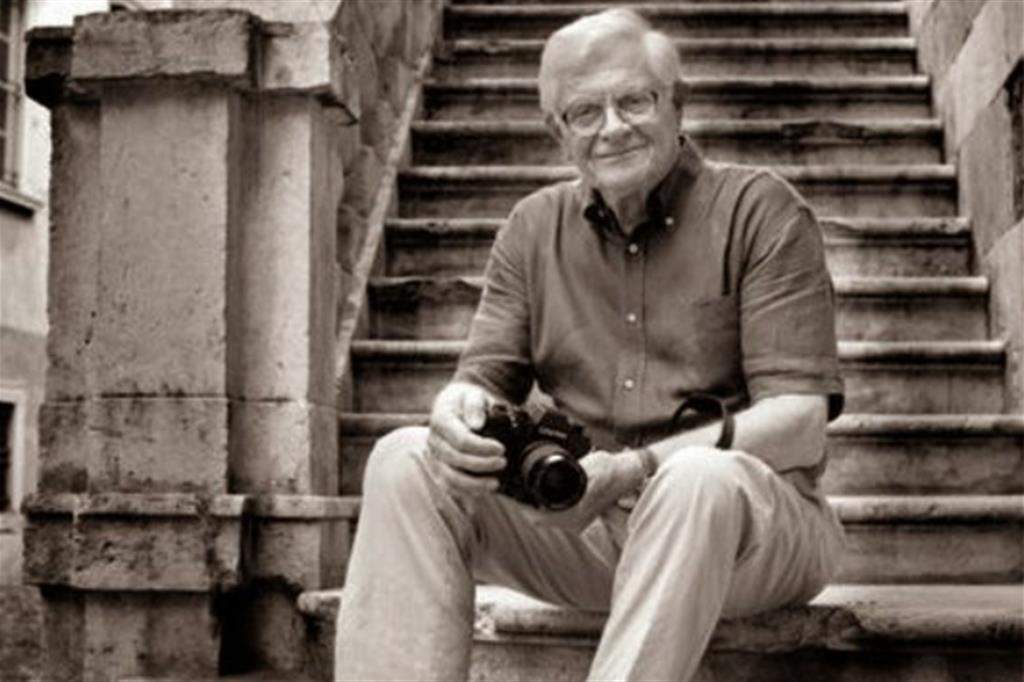Farewell to Pepi Merisio, photographer who chronicled the 20th century
Pepi Merisio, a photographer and photojournalist and one of the greatest Italian photographers of the 20th century, passed away in Bergamo, Italy, on February 3 at the age of 90. Giuseppe Merisio, known as Pepi, was born in Caravaggio in 1931 and had trained as a self-taught photographer, beginning to take pictures in 1947: having carved out a name for himself in amateur photography, he had then decided to make photography his job, and in 1956, at the age of twenty-five, he began to collaborate first with the Touring Club and then with various magazines, such as Camera, Look, Du, Famiglia Cristiana, Paris Match, and Realité. By 1963 he had begun working for Epoca, one of the most important Italian magazines for photography, and he became famous in 1964 when, in Epoca itself, he published a famous reportage entitled Una giornata col papa (A Day with the Pope), which documented the daily life of Paul VI: it was the beginning of a collaboration with the Vatican, so much so that he was even nicknamed “the photographer of Paul VI.”
In the meantime, while he was achieving ever greater success with his professional activity, Pepi Merisio had also undertaken research work that resulted, in 1969, in his first photographic work, Terra di Bergamo, an account in images of his homeland, with particular attention to the rural life of the Bergamo area, published in three volumes: the artist himself considered it his masterpiece, although he never stopped doing research and exhibitions throughout Italy afterwards. During his career, in fact, Pepi Merisio published about 150 photo books with publishers such as Electa, Zanichelli, Silvana, Atlantis, Contrasto, Orell Füssli, Bolis, Atlantis, Lyasis and many others. In 1979 he completed a black and white shoot for Polaroid, now housed at the Collection Polaroid International in Boston. Again, in 1982 the publishing house Fabbri included him in the series I grandi fotografi in 1988 he was named “Master of Italian Photography” by the Italian Federation of Photographic Associations FIAF and then, nine years later, he became the protagonist of a monograph in the series Grandi Autori made by the same association. In 1989 he represented Italy in the volume commemorating 75 years of Leica, and in 2011 he was invited to the 54th Venice Biennale.
Countless exhibitions have been dedicated to him. In 2019, the latest: Guardami at the Sestini Museum in Bergamo, curated by the photographer himself together with his son Luca, an anthological exhibition on his career, and at the same time, the exhibition Pepi Merisio. Il Gioco (held at the Tower of the Castello dei Vescovi di Luni in Castelnuovo Magra), conceived by Raffaella Ferrari, curated by Elisabetta Sacconi, and all centered on the theme of play. Several awards, including the New Talent of Popular Photography award and the Fermo Prize, both in 1963, which opened wide the doors of success for him, the National Italian Photojournalist Award in 1964, and the Genoa International Photojournalism Award in 1965.
“With the passing of Pepi Merisio,” said Giorgio Gori, mayor of Bergamo, "Bergamo loses an artist of international stature, who was in love with his territory and the people of Bergamo. His photographs recounted our landscape, the life of rural communities and the changes that passed through them during the 20th century. Just recently, Bergamo wanted to honor the great photographer: with the Guardami exhibition, set up in 2019 in the spaces of the Sestini Museum of Photography at the Cloister of San Francesco, curated by the Bergamo in History Foundation, and with the civic merit that we had decided to award him at the end of last year, and which unfortunately I did not have the chance to give him due to anti-Covid restrictions. His snapshots, kept in the very archive of the Museum of Photography, represent a piece of our history and our life’.
 |
| Farewell to Pepi Merisio, photographer who chronicled the 20th century |
Warning: the translation into English of the original Italian article was created using automatic tools. We undertake to review all articles, but we do not guarantee the total absence of inaccuracies in the translation due to the program. You can find the original by clicking on the ITA button. If you find any mistake,please contact us.





























